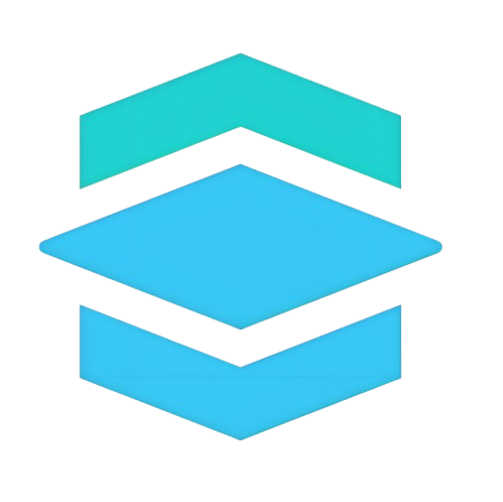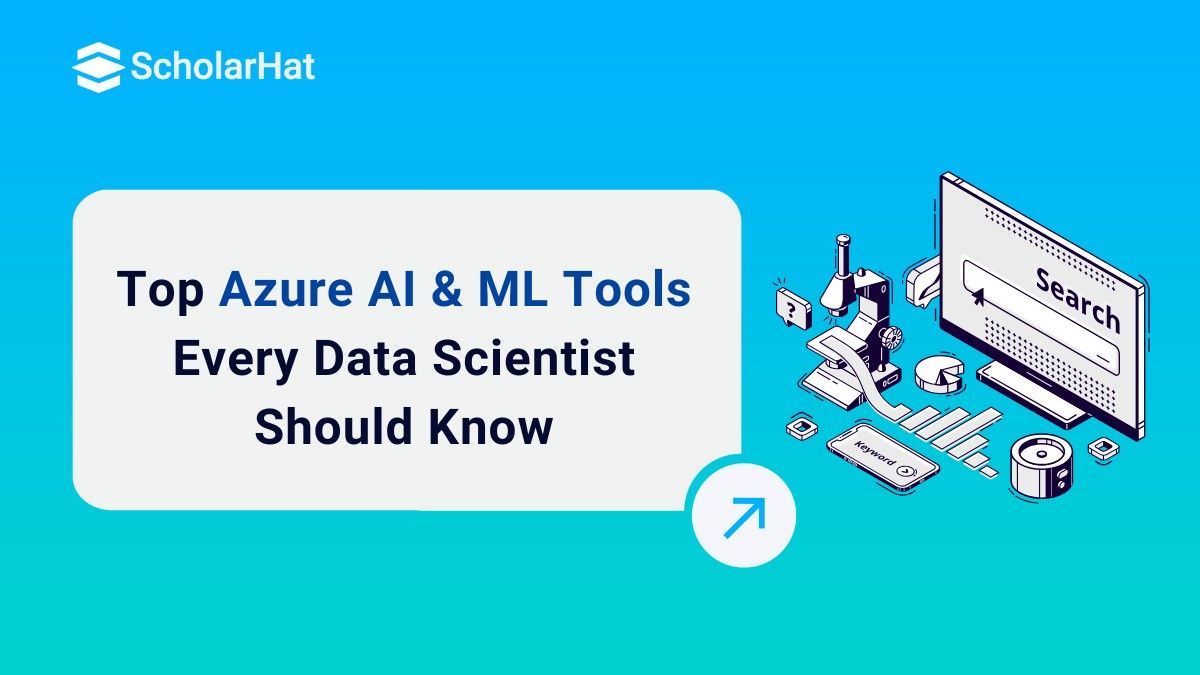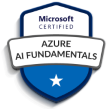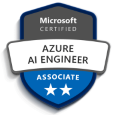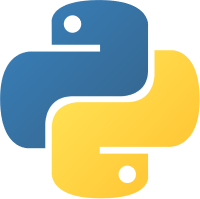08
JanTop Azure AI and ML Tools You Should Master in 2025
Azure AI and machine learning (ML) tools are aimed at simplifying the creation, deployment, and management of AI solutions. Seamlessly integrated within the Azure ecosystem, these tools enable developers to efficiently build, train, and deploy models. Core offerings include Azure AI Studio, Azure Machine Learning, and a range of Azure AI services tailored to specific use cases.
In this Azure AI Tutorial, we’ll dive into the leading AI and ML tools offered by Azure that help you choose the right solutions to power your project effectively. Whether you’re new to Azure AI or just interested, the free Azure AI-900 course provides straightforward lessons to help you build your Azure AI knowledge.
Top Azure AI/ML Tools in 2025
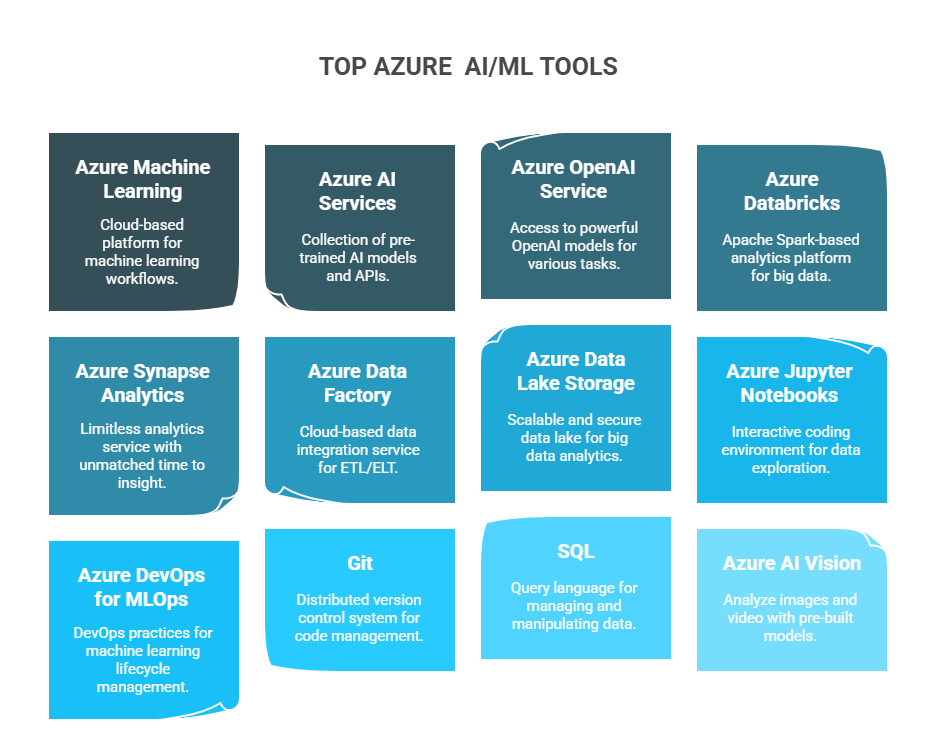
1. Azure Machine Learning (Azure ML)
Azure Machine Learning is a cloud service that provides MLOps tools to train and deploy machine learning models by managing all the machine learning operations. It manages the whole Machine learning project lifecycle.
How can you benefit from Azure ML?
The benefits you gain from Azure ML depend on the profession you have, for example:
- If you are a Data scientist or ML engineer,then you can useMLOpstools to accelerate and automate your day-to-day workflows.
- If you are an Application developer,then you can use MLOps tools for integrating models into applications or services.
- Or if you are a Platform developer,you can use these tools for building advanced ML tooling by leveraging the power of Azure Resource Manager APIs.
Some Azure ML tools are:
- Azure Machine Learning Studio: A web-based, drag-and-drop interface for building, training, and deploying models.
- Python SDK (v2): A Python library for interacting programmatically with Azure ML resources — for experiment tracking, training, deployment, pipelines, etc.
- Azure CLI (v2): A command-line interface to manage Azure ML assets and workflows via terminal or scripts.
- Azure Resource Manager REST APIs: REST APIs (like the Azure Resource Manager [ARM] APIs) can be used to automate and integrate Azure ML resource management (workspaces, compute, deployments) from any platform.
2. Azure AI Services
Azure provides prebuilt and customizable APIs and models, for example Natural language processing for conversations, search, monitoring, translation, speech, vision, and decision-making.
The list of Azure AI Services is:
- Azure icon Azure AI Agent Service: Build smart assistants that can access real-world data and take action.
- Azure AI Model Inference:Use powerful, ready-made AI models for tasks like summarizing or analyzing data.
- Azure AI Search:Add intelligent search features to your apps that understand meaning and context.
- Azure OpenAI: Use GPT models (like ChatGPT) for text generation, coding, and more.
- Azure Bot Service: Create chatbots that work across websites, apps, and messaging platforms.
- Content Safety: Automatically detect and block harmful or inappropriate content.
- Custom Vision:Train a model to recognize objects in images specific to your needs.
- Document Intelligence:Extract useful data from documents like forms or invoices.
- Speech Service:Convert speech to text, text to speech, translate, and recognize speakers.
- Translator:Translate text into 100+ languages in real-time.
3. Azure OpenAI Service
Azure OpenAI gives you access to some of the most powerful AI language models like GPT-4, GPT-4 Turbo with vision, GPT-3.5, and smaller versions like o1, o3, and mini models. You can use these models to:
- Write or generate content
- Summarize long texts
- Understand images
- Search using meaning instead of keywords
- Convert plain language into code
You can you REST APIs or programming languages like Python, C#, JavaScript, Java to connect to these models.
4. Azure Databricks
Azure Databricks is basically a workspace in the cloud where teams can work together on data. Think of it as a shared environment for people who need to clean, analyze, or build AI models using big data, without needing to set up a bunch of complex infrastructure.
Key features:
- All your data in one place: You can bring all your data to one place so that your whole team works with the same reliable info.
- Get the data using plain English: To get the data, you don't have to write complex code. you can just write Show me sales from last quarter," — and Databricks understands and gets you the answer.
- Open Source Friendly: It uses popular open-source tools like Apache Spark, Delta Lake, MLflow, and Hugging Face, so developers and data scientists feel right at home.
5. Azure Synapse Analytics
Azure Synapse Analytics is a powerful tool from Microsoft that helps you bring all your data together — whether it’s in big data systems, databases, or the cloud — and make sense of it through reports, dashboards, and AI.
Think of it as your all-in-one platform for combining,analyzing, and visualizing data fromdifferent sources — without needing to jump between multiple tools.
Use Cases:
- Combine data from multiple sources
- Run SQL queries on large datasets
- Integrate with Power BI for visualization
- Support for serverless and dedicated SQL pools
6. Azure Data Factory
Azure Data Factory (ADF) is a cloud-based tool from Microsoft that helps you move, clean, and organize data from different places — all automatically.Think of it like a data delivery and transformation service that connects to your data (wherever it lives), moves it to where it needs to be, cleans it up, and gets it ready for reporting, dashboards, or machine learning.
- Combine both datasets
- Clean and analyze the data
- Create reports
7. Azure Data Lake Storage
Azure Data Lake Storage is a feature built on top of Azure Blob Storage. It brings together the strengths of two services—Azure Data Lake Gen1 and Azure Blob Storage. This means you get:
- A folder-like system to organize your data
- Security at the file level
- The ability to handle large amounts of data
- Different storage options to save costs
- Backup and recovery support
What is a Data Lake?
A data lake is a central place to store all kinds of data, whether it’s organized (like tables) or unorganized (like images, videos, or logs). You don’t need to clean or format the data before storing it. You can save it as it is and use it later for analysis.
Azure Data Lake Storage:
Azure Data Lake Storage is not a separate service. It is a set of features that you turn on in your regular Azure Blob Storage account. You just enable a setting called "hierarchical namespace" to start using these features.
8. Azure Jupyter Notebooks
A Jupyter Notebook is a digital notebook where you can write and run code and see the output right there on the same page. You can also write notes, add charts, and write an explanation of your work. People who work with data, like in machine learning or data science, mostly use it.
When you use Jupyter Notebooks with Azure, you're doing all this on the cloud, using Microsoft’s servers. That means your computer doesn’t need to be very powerful—Azure does the heavy lifting for you.
Where Can You Use Jupyter Notebooks in Azure?
You can work with Jupyter Notebooks in different Azure tools:
1. Azure Machine Learning Studio
- It has Jupyter Notebooks built in
- You can write Python code to clean data, train ML models, and show results
2. Azure Synapse Analytics
- Good for working with large datasets
- You can explore data and create reports using notebooks
3. Azure Databricks
- You can write code in Python, SQL, or other languages
- Best for working with big data or training complex models
Earlier, Microsoft had a service called Azure Notebooks, but it’s no longer available. Now they suggest using Azure Machine Learning instead.
9. Azure DevOps for MLOps
You can easily integrate Azure Machine Learning with Azure DevOps pipelines. This helps you to automate the machine learning life cycle. Can you automate various operations such as:
- Deployment of Azure Machine Learning infrastructure
- Data preparation (extract, transform, load operations)
- Training machine learning models with on-demand scale-out and scale-up
- Deployment of machine learning models as public or private web services
- Monitoring deployed machine learning models (such as for performance analysis)
10. Git
Git is a version control system that tracks changes in your code, data and Machine Learning workflows.
The benefits that git provides are:
- Collaborate on code and notebooks
- Track changes to experiments and datasets
- Integrate with CI/CD pipelines in Azure DevOps
- Host model training code and deployment scripts
11. SQL
Structured Query Language (SQL) is essential for querying and managing data stored in relational or analytical databases.
Role of SQL in Data Science:
- Query large datasets for analysis and preprocessing
- Join and filter data for feature engineering
- Power reports, dashboards, and real-time analytics
- Use inside tools like Synapse, Databricks, or Data Factory pipelines
12. Azure AI Vision
Azure AI Vision is a Microsoft cloud service that allows computers to interpret the content of images and videos. It utilizes artificial intelligence to identify objects, extract text, and track human movement within physical spaces. You don’t need to be an AI specialist — just upload a picture or video, and it will analyze and describe what it sees.
Key Features of Azure AI Vision?
- Analyze Images: Detects people, animals, objects, and scenery. For instance, uploading a photo might result in: “This image contains a dog, a bicycle, and a tree.”
- Read Text (OCR): Recognizes printed or handwritten text from signs, documents, or receipts, even in multiple languages.
- Custom Vision: Train it to recognize specific items relevant to your business, such as products or logos.
- Spatial Analysis: For cameras in stores or offices, it can count people, monitor where they spend time, and measure how long they stay, aiding retail and security.
- Video Analysis: Using Video Indexer, analyze videos to extract spoken words, faces, emotions, and scenes.
How to use Azure AI Vision?
- Use in the Azure Portal without coding
- Connect via APIs
- Use programming languages like Python, JavaScript, or C#
- Embed into apps, websites, or IoT devices
Real-Life Examples of Azure AI Vision:
- An invoice processing company automatically reads invoices with OCR
- A store tracks customer movement through spatial analysis
- A developer creates an app to describe photos for visually impaired users
- A factory trains a model to detect product defects with Custom Vision
How Azure AI and ML Can Benefit You?
1. Global Infrastructure
Azure's Global Infrastructureis divided into three groups:
- Regions
- Availability Zones(AZs)
- Data Centers
All three together form the foundation of Azure Cloud Infrastructure. They enable you to minimize latency by locating your data near your customers, maintain services during disasters, and stay compliant with regional regulations.
- Data Centers: Data centers are physical buildings that have many servers, storage devices, and networking equipment. Data centers are the physical foundation of Azure's cloud infrastructure.
- Availability Zones (AZs): An availability zone is a logical grouping of one or more physically separate data centers within a region. If one of the Availability zones stops working due to a power outage or network issue that the other still keeps working. A single data center cannot offer this level of protection on its own.
- Regions: A region is a geographic area composed of one or more data centers. The benefit of having too many regions is that your data is always close to your users. Microsoft Azure has a total of 60 regions worldwide, more than any other cloud service provider. AWS has 33 global regions, and Google Cloud has 40. Azure users can choose any region to deploy resources based on performance, data residency, and compliance needs.
Click here to view all Azure data centers in a 3D view.
image below shows all Azure data centers in the world map.
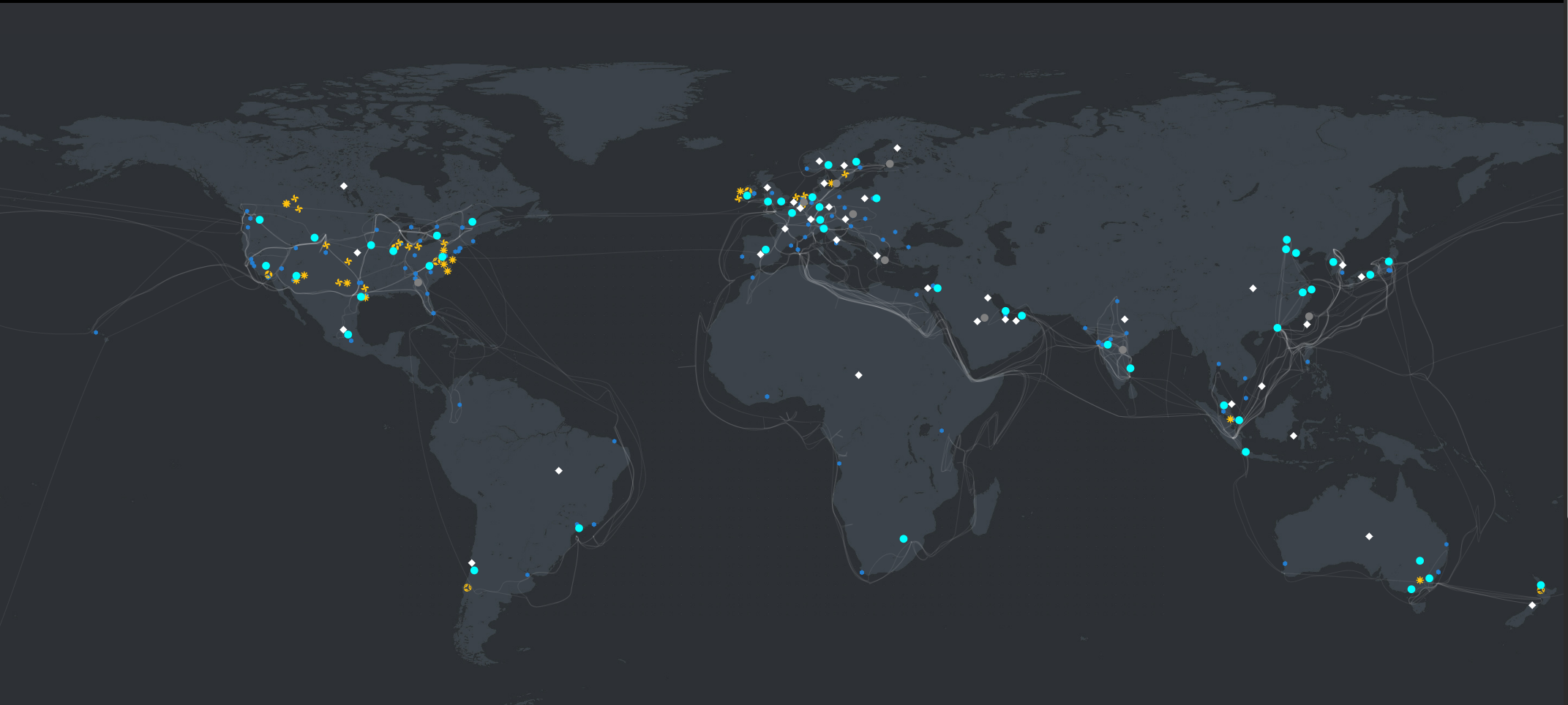 Image source: Microsoft
Image source: Microsoft
2. Integration with popular frameworks (PyTorch, TensorFlow, Scikit-learn).
Microsoft Azure can seamlessly integrate with popular frameworks like PyTorch, TensorFlow, and Scikit-learn by providing many services and tools. So, no matter which framework you use, you can leverage the power of Azure cloud services for Model training, deployment, and management efficiently at scale.
3. Azure's hybrid support (on-premise, multi-cloud, edge).
Azure provides a cloud-based service called Azure Arc that extends the Azure Resource Manager-based management model to non-Azure resources like virtual machines, Kubernetes clusters, and containerized databases. Other tools that Azure provides are:
- Azure Arc-enabled servers
- Azure Arc-enabled Kubernetes
- Azure Arc-enabled SQL Server
- Azure Arc-enabled data services
- Azure Arc-enabled SQL Managed Instance
Where You Can Learn Azure AI and ML Tools?
Want to master Azure AI tools like Azure Bot Services, Cognitive Search, LUIS, and Machine Learning Studio?
Whether you're a beginner starting your AI journey or a professional preparing for the AI-102 certification, ScholarHat has a course tailored just for you. Explore our hands-on, career-focused programs packed with real-world projects and expert guidance.
Azure AI Engineer Certification Training| Scholarhat
Build, manage, and deploy real-world AI solutions on Microsoft Azure.
- Develop smart apps using Azure Bot Services and Azure Machine Learning
- Master LUIS, Azure ML Studio, and Azure Cognitive Search
- Build NLP models using Language Understanding (LUIS)
- Practice with AI-102 exam prep tests and get live mentorship
- Tools covered: Azure AI, Python, GitHub Copilot, VS Code, OpenAI
- Duration: 6 Weeks | Training Mode: Live | Mentors: Microsoft MVPs
Career Impact:
- Avg Salary: ₹15–30 LPA (India) | $100K–150K (US)
- High growth with 35% YoY job demand
- Roles: ML Engineer, AI Solutions Architect, Data Scientist
Explore Now
Azure AI & ML Certification Training (Beginners to Pros)| Scholarhat
Your entryway to AI with Azure—No prior experience required.
- 4 Months of Intensive Training
- Build AI apps with Azure AI Services and integrate GenAI tools like GPT and DeepSeek
- Complete 4 live projects with mentor guidance
- Get certified with Microsoft Azure AI Engineer (AI-102)
- Includes resume support and job assistance
Ideal For: Beginners, students, IT professionals, business analysts
Explore Now
Build Real-World Projects
Hands-on, work experience-based learning is what makes ScholarHat different from others. You'll learn to build real-world projects live with mentors in just a few weeks.
| Projects | Description |
| Customer_Support_Chatbot(Powered by OpenAI) | Build a scalable chatbot using Azure OpenAI and .NET Core to manage customer inquiries, offer support, and deliver real-time responses through GPT-based NLP models. |
|---|---|
| Sales Forecasting & Prediction | Use Azure ML to forecast product demand by analyzing data trends, seasonality, and business factors—ideal for retail and manufacturing optimization. |
| Fraud Detection System | Implement fraud detection using Azure ML with anomaly detection to monitor transaction behavior and flag suspicious patterns in financial services. |
Read More - Azure Ai Engineer Interview Questions for Freshers
Conclusion:
In this article, we have explored various Azure AI and ML tools that data scientists can use to increase their productivity. These tools provide many features like data handling, automating tasks, adding AI features to our projects, etc. Finally, we understand that whether you are a beginner or an advanced practitioner who is building large-scale AI solutions, Azure offers the right tools to accelerate your journey in AI and machine learning.
Ready to build with Azure AI? Join the Azure AI Engineer Certification today and future-proof your career! This course provides you with comprehensive knowledge and hands-on skills to design, develop, and deploy intelligent AI solutions using Azure services.
FAQs
Azure AI Fundamentals (AI-900) | AI Technician, Junior AI Developer
Azure Data Fundamentals (DP-900) | Data Technician, Junior Data Analyst
Azure Administrator Associate (AZ-104) | Azure Administrator, Cloud Systems Administrator
Take our Azureai skill challenge to evaluate yourself!

In less than 5 minutes, with our skill challenge, you can identify your knowledge gaps and strengths in a given skill.
